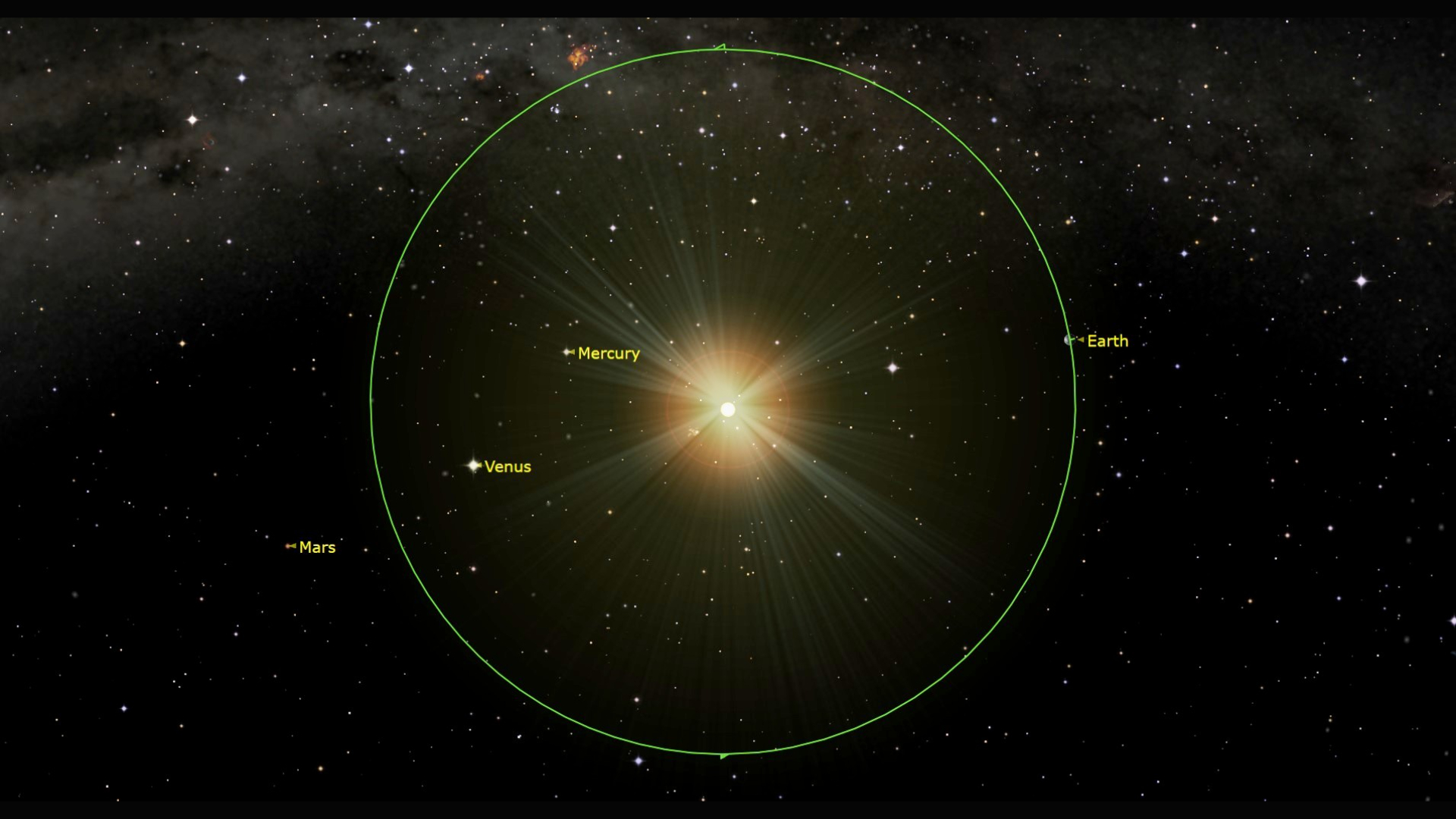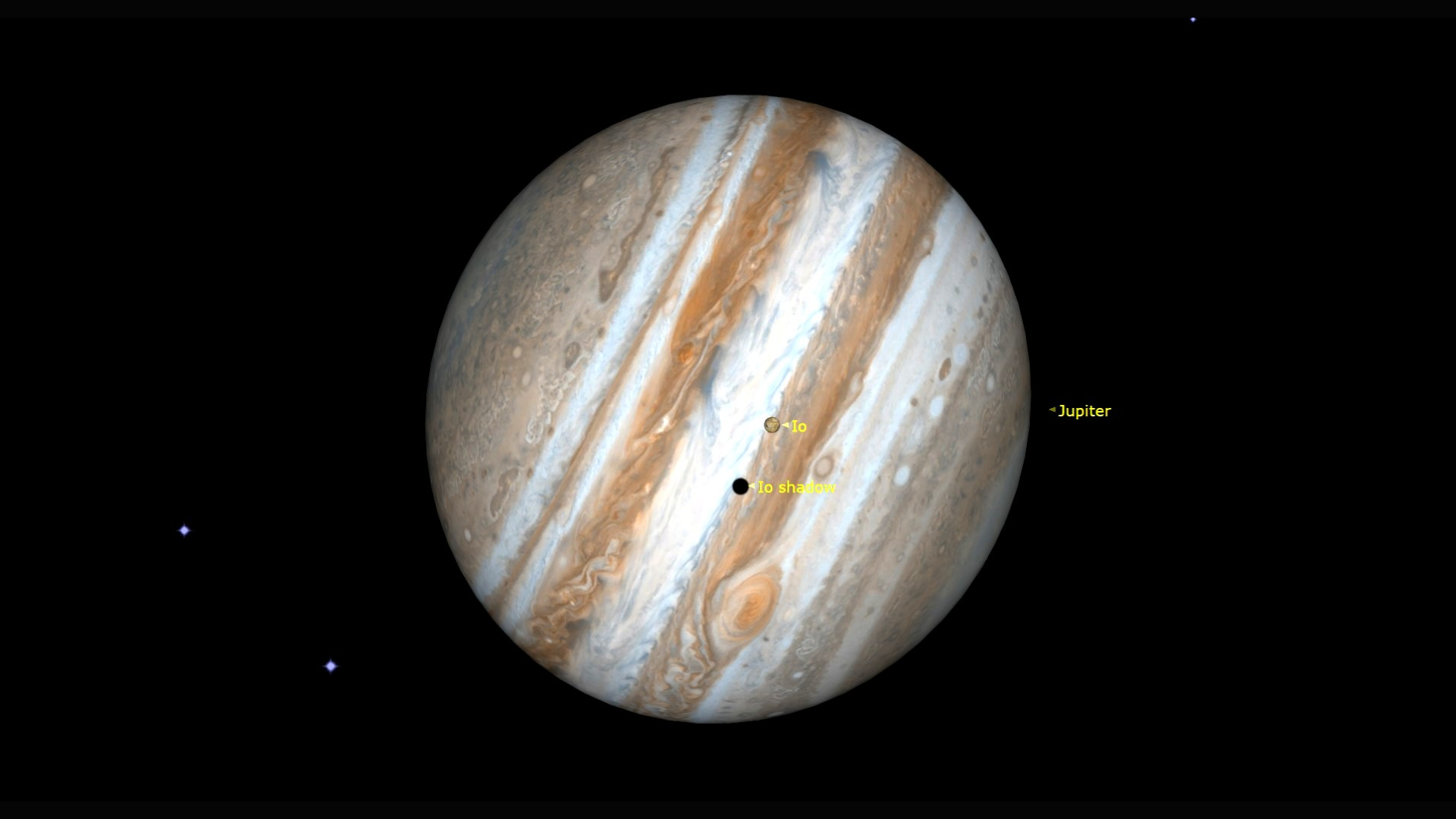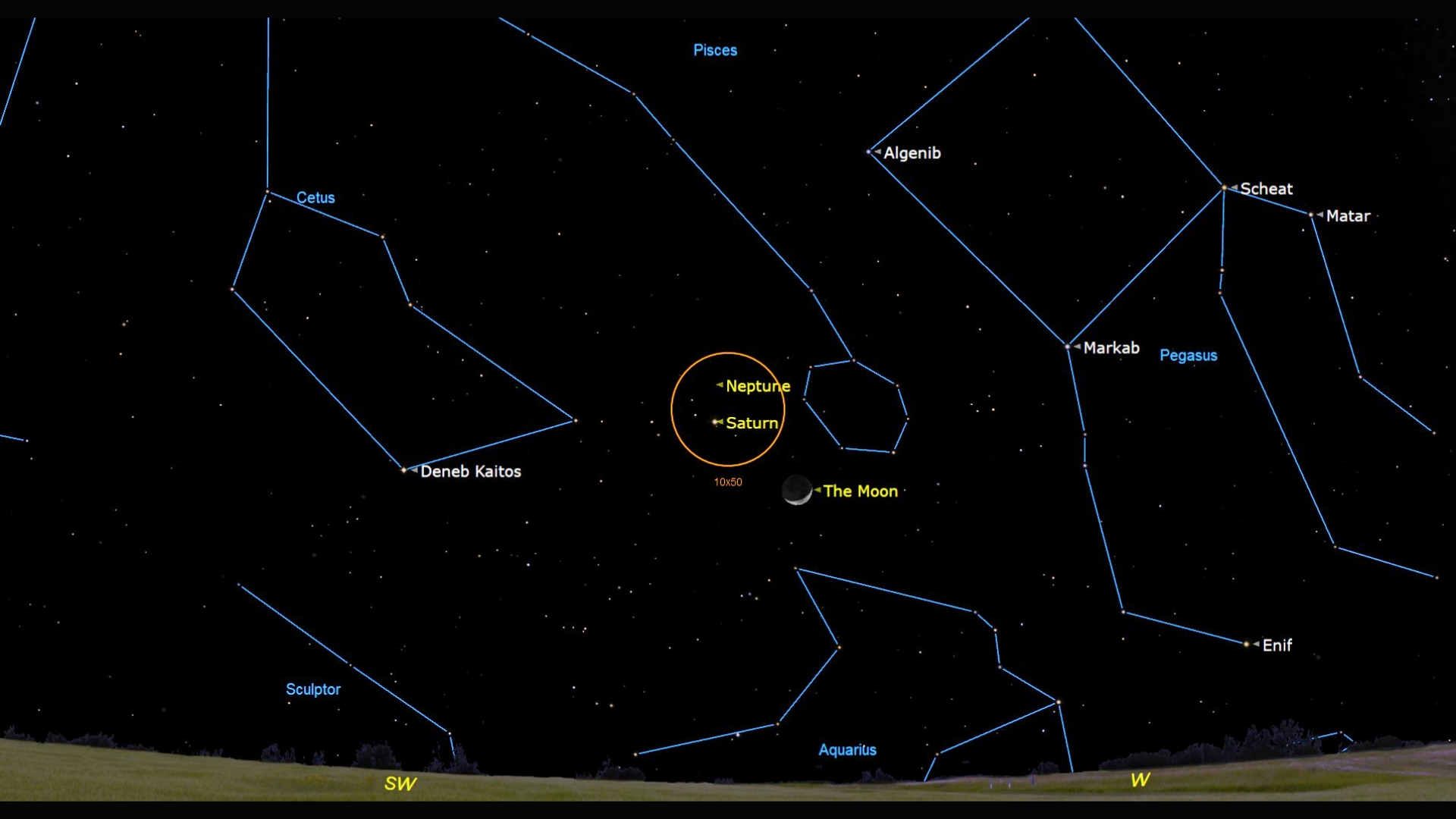

Want to see the visible planets in the night sky? The Celestron NexStar 4SE is ideal for beginners wanting quality, reliable and quick views of celestial objects. For a more in-depth look at our Celestron NexStar 4SE review.
How unfortunate that combust — an astronomically useful adjective — has become all but obsolete. It was once defined as referring to the moon or a planet that is invisible to the naked eye because of its proximity to the sun. And as 2026 gets underway, three of the five bright naked-eye planets most certainly fulfill the definition of combust. During a span of just over three weeks, Venus, Mars and Mercury all will be positioned on the other side of the sun as seen from our earthly perspective, and as such will be "out of the loop" so far as being visible.
Only Saturn and Jupiter are available this month. Saturn can be found about halfway up in the south-southwest sky at nightfall at the start of the month, but it's only about a quarter of the way up in the west-southwest sky at dusk by month's end. Unlike Venus and Jupiter, Saturn is not particularly obvious, though it shines at first magnitude; but it stands out because it's located among the dim stars of Aquarius, the Water Carrier. The good news about Saturn is that its famous ring system will be tilting noticeably toward Earth in the coming weeks and months and will again become quite conspicuous in most telescopes by late spring and summer.
Jupiter, as always, is a dazzling object, shining among the stars of Gemini the Twins. It reaches opposition on Jan. 10; this giant Planet at magnitude -2.7, rises at dusk and is out all night. Space.com will devote a column on how to observe "Big Jupe" later this month.
In our schedule, remember that when measuring the angular separation between two celestial objects, your clenched fist held at arm's length measures roughly 10 degrees. Here, we present a schedule below which provides some of the best planet viewing times as well as directing you as to where to look to see them.
Mercury

Mercury arrives at superior conjunction (passing behind the sun) on Jan. 21 and is not visible.
Venus

Venus, the brightest of all the planets, remains hidden in the sun's glare all month, and like Mercury, reaches superior conjunction on Jan. 6.
Earth

Earth is at perihelion on Jan. 3 when it reaches its closest to the sun in its orbit for the year at 12:16 p.m. EST. At that moment, its solar distance will be equal to 91,403,637 miles (147,099,895 km). We are 3.3 percent closer to the sun than we will be when the Earth is at aphelion next July 6.
Mars

Mars, like Mercury and Venus, lies too close to the sun to be seen as it arrives at solar conjunction on Jan. 9.
Jupiter

Jupiter comes to opposition on Jan. 10, which means it's visible essentially all night around this date, rising at sunset, setting at sunrise. Later in January, it appears higher in the east early in twilight and sets around the beginning of dawn.

It blazes in the east during the evening, by far the brightest point of light in the sky, shining at magnitude -2.7. On Jan. 3, at around 6:00 p.m., you'll see the moon and Jupiter rising side-by-side in the east-northeast, separated by about 3 degrees. Then, on Jan. 30, for the second time this month, the moon has a rendezvous with Jupiter. At around midnight, they'll appear high in the southwest sky; the nearly full moon appearing to ride almost 4 degrees directly above Jupiter.
Saturn

Saturn, at about magnitude +1.2 in January, is only about 1/36 as bright as Jupiter. You'll find it about halfway up in the south-southwest at dusk on New Year's Day, but it's only about half as high up in the west-southwest at nightfall on Jan. 31.
The nearly edge-on rings open slightly toward Earth this month, their inclination angle increasing to 2.2 degrees by month's end. But unfortunately, by later in the month, Saturn's decreasing altitude will start to fuzz telescopic images, so start looking early in the twilight to get your last good evening views this month. On the evening of Jan. 22, Saturn will be situated about a half dozen degrees to the upper left of a slender waxing crescent moon.

Joe Rao serves as an instructor and guest lecturer at New York's Hayden Planetarium. He writes about astronomy for Natural History magazine, the Farmers' Almanac and other publications. Follow us on Twitter @Spacedotcom and on Facebook.
Editor's Note: If you get a great photo of any of the planets and would like to share it with Space.com's readers, send your photo(s), comments, and your name and location to spacephotos@space.com.







